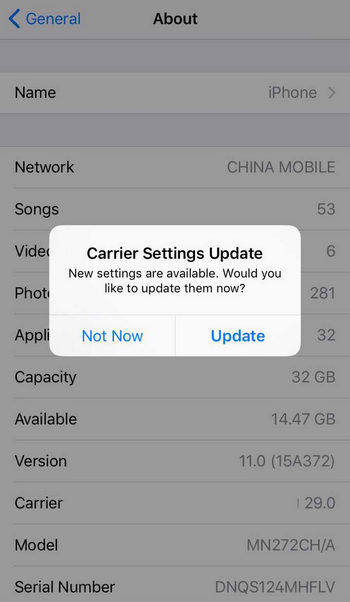
That last one remains my only gripe I've ever had with Apple's carrier bundles.Īpple doesn't openly document what these settings all do, because it doesn't have to since they're only developed and maintained internally, however nearly all of it is immediately obvious if you know the lingo. This is also where the "4G" indicator and 3G toggle settings are changed (see the above "DataIndicatorOverride" line), if you remember that whole situation. They also do contain lower level things such as band priority, configuration for UE category, and other network access settings. This spans the gamut from parameters like APNs that the phone should use, short codes (USSD codes) for checking balance or data use, credentials for WiFi networks that the mobile network operator runs to do offloading, to MMS settings such as payload size, address, and recipients, or tethering and visual voicemail settings. pri files are settings which define relevant network parameters for both iOS and the baseband. There are also PNG images for the operator logo at top left with appropriate tweaks to character kerning and appearance. pri files for defining things unique to each network. These then get distributed inside a particular iOS release, or asynchronously via iTunes or over the air if they need to make updates as necessary. If you're willing, however, let's walk through it.įirst, what is an IPCC or "Carrier Bundle" in the context of iOS? In order to support a huge number of mobile networks, Apple builds these bundles which contain settings used to provision and optimize the device for a particular network in collaboration with the respective network operator.
Ios 8 carrier bundle files full#
If you're going to read anything, just take that away with you, as the full explanation gets technical fast. There's no arbitrary capping of UE Category (User Equipment speed category), throttling on-device, or anything else that would prevent the device from attaching and taking full advantage of whatever the network wants to handshake with. Thankfully this is not the case currently with any iOS devices. Later there was the AT&T Nexus S which also had its HSDPA and HSUPA categories limited via build.prop. If you've been with us long enough you'll probably remember the case of the HTC Inspire 4G and Atrix 4G, two handsets which AT&T disabled HSUPA on, and later re-enabled with an update. Sideloading tweaked carrier bundles isn't going to magically increase throughput, either.Īt a high level, some of this seemed plausible at first, as this wouldn't be the first time that a handset maker throttled devices via some on-device setting at bequest of a network operator. Apple doesn't limit cellular data throughput on its devices - there's both no incentive for them to do so, and any traffic management is better off done in the packet core of the respective network operator rather than on devices.

The reality is that this is simply not the case. T he original source post has since been deleted, so I am linking to the always-awesome Tmonews instead. Yesterday there were some allegations made about whether Apple is intentionally throttling cellular data throughput on iPhones and iPads via some files used for network provisioning.


 0 kommentar(er)
0 kommentar(er)
